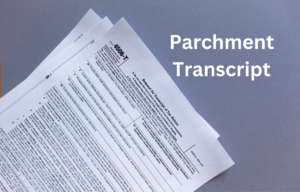The Fusion for Home Booster AGI vs Whip provides essential signal amplification, helping homes improve cellular connectivity even in weak signal areas. Two popular configurations for this booster are the AGI (Antenna Gain Indicator) and Whip antenna options, each offering unique benefits based on user needs and location. Selecting between the AGI and Whip antennas involves evaluating their specific strengths in boosting signals for various environments.
AGI antennas are ideal for remote or rural settings, where focusing signal strength toward distant towers is crucial. In contrast, Whip antennas excel in suburban or urban areas by capturing signals omnidirectionally, making them versatile for multiple signal sources. This comparison will guide you in understanding how each antenna type within the Fusion for Home Booster system serves different use cases effectively.
How Does AGI Antenna Improve Signal Strength?
Fusion for Home Booster AGI vs Whip antenna enhances signal reception by directing gain toward a specific source, making it highly efficient in areas with weak or inconsistent signals. This setup maximizes the booster’s performance by focusing on known cellular tower locations, ensuring stronger and more stable signals. Users benefit from improved voice clarity and data speeds in environments with limited external signal coverage.
AGI antennas typically require precise alignment during installation to achieve optimal performance. While it may involve more effort in setting up, this focused approach minimizes interference from other signals, resulting in fewer dropped calls and better overall connectivity. This makes AGI antennas an excellent choice for homes situated far from cell towers.
What Advantages Does The Whip Antenna Provide?
Fusion for Home Booster AGI vs Whip antennas offer simplicity and flexibility by capturing signals from multiple directions, making them easy to install and ideal for fluctuating signal environments. They radiate signals 360 degrees, ensuring that users remain connected regardless of their location within the home. This feature is especially useful for urban areas where signal sources might be more varied.
Since the Whip antenna does not require precise alignment, it offers a more user-friendly installation process. It provides reliable performance with minimal adjustments, helping households maintain consistent connectivity without the need for specialized equipment. Whip antennas are well-suited for indoor use, ensuring seamless coverage throughout the space.
What Installation Differences Exist Between AGI And Whip Antennas?
Installing Fusion for Home Booster AGI vs Whip antennas demands careful alignment, as they need to face the correct direction to maximize signal gain. This process can involve trial and error, but the rewards include stronger connections and increased coverage in targeted areas. AGI antennas are better suited for fixed installations in remote locations where signal direction is known.
Whip antennas offer plug-and-play simplicity. They can be placed almost anywhere inside the home without needing alignment, making them perfect for users looking for a quick solution. The Whip antenna’s ease of use makes it appealing for smaller homes or apartments with stable yet weak signals.
Which Antenna Is Best For Rural Homes?
Fusion for Home Booster AGI vs Whip the AGI antenna often outperforms the Whip due to its directional capabilities. With limited nearby cell towers, the AGI’s ability to focus on distant towers provides more reliable connectivity. This setup is ideal for residents seeking to maximize their signal strength in remote areas.
Rural users must also consider installation effort and the availability of nearby towers. If multiple weak signal sources exist, a Whip antenna might still be effective as it captures signals from all directions, though with less targeted amplification.
How Does Each Antenna Type Handle Multiple Users?
Fusion for Home Booster AGI vs Whip antennas can support multiple devices simultaneously, but they do so in different ways. The AGI antenna directs its amplified signal toward a specific area, ensuring high-quality coverage within its range. This is beneficial for families or households where most activities occur in one section of the home.
The Whip antenna provides more dispersed coverage, making it better for environments where users move around frequently. Its omnidirectional nature ensures that all connected devices maintain a stable signal, which is helpful in larger homes with multiple users and varied activities.
Which Antenna Provides Better Long-Term Value?
Fusion for Home Booster AGI vs Whip antennas offer unique long-term benefits, depending on the home’s needs. AGI antennas are more suitable for long-term installations where directional signal gain ensures strong, consistent coverage. They might involve higher initial effort but provide lasting improvements in remote areas.
Whip antennas, with their ease of installation and flexibility, offer excellent value for users who prioritize convenience and versatility. They are ideal for users seeking moderate improvements without the complexity of precise alignment. Both configurations within the Fusion for Home Booster system ensure that users experience enhanced connectivity.
The Fusion for Home Booster AGI vs Whip antennas provides effective solutions tailored to different signal challenges. The AGI antenna excels in rural and remote settings, while the Whip antenna offers flexibility and ease of use in urban environments. Understanding the strengths of each antenna type allows users to select the best configuration to meet their connectivity needs at home.
Read more at https://grossproperty.com/












